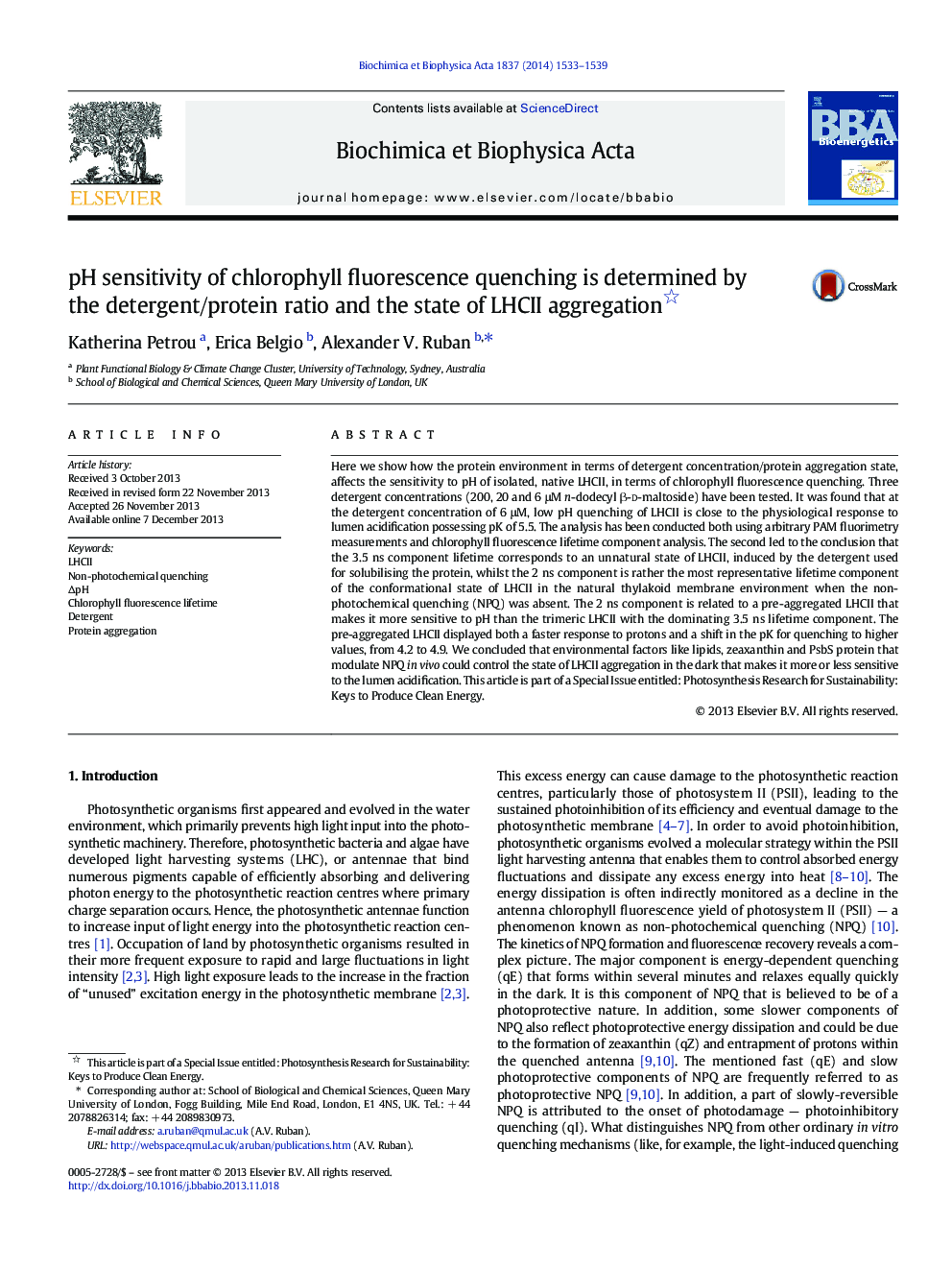| کد مقاله | کد نشریه | سال انتشار | مقاله انگلیسی | نسخه تمام متن |
|---|---|---|---|---|
| 1942179 | 1052585 | 2014 | 7 صفحه PDF | دانلود رایگان |

• Low-pH quenching in isolated LHCII at different detergent concentrations is studied.
• Quenching pK depended upon the detergent concentration and the LHCII aggregation.
• Fluorescence component at 2 ns was replaced by 0.6–1 ns one in quenched LHCII.
• Membrane environment tunes pH-sensitivity of LHCII by altering its aggregation.
Here we show how the protein environment in terms of detergent concentration/protein aggregation state, affects the sensitivity to pH of isolated, native LHCII, in terms of chlorophyll fluorescence quenching. Three detergent concentrations (200, 20 and 6 μM n-dodecyl β-d-maltoside) have been tested. It was found that at the detergent concentration of 6 μM, low pH quenching of LHCII is close to the physiological response to lumen acidification possessing pK of 5.5. The analysis has been conducted both using arbitrary PAM fluorimetry measurements and chlorophyll fluorescence lifetime component analysis. The second led to the conclusion that the 3.5 ns component lifetime corresponds to an unnatural state of LHCII, induced by the detergent used for solubilising the protein, whilst the 2 ns component is rather the most representative lifetime component of the conformational state of LHCII in the natural thylakoid membrane environment when the non-photochemical quenching (NPQ) was absent. The 2 ns component is related to a pre-aggregated LHCII that makes it more sensitive to pH than the trimeric LHCII with the dominating 3.5 ns lifetime component. The pre-aggregated LHCII displayed both a faster response to protons and a shift in the pK for quenching to higher values, from 4.2 to 4.9. We concluded that environmental factors like lipids, zeaxanthin and PsbS protein that modulate NPQ in vivo could control the state of LHCII aggregation in the dark that makes it more or less sensitive to the lumen acidification. This article is part of a Special Issue entitled: Photosynthesis Research for Sustainability: Keys to Produce Clean Energy.
Figure optionsDownload high-quality image (178 K)Download as PowerPoint slide
Journal: Biochimica et Biophysica Acta (BBA) - Bioenergetics - Volume 1837, Issue 9, September 2014, Pages 1533–1539